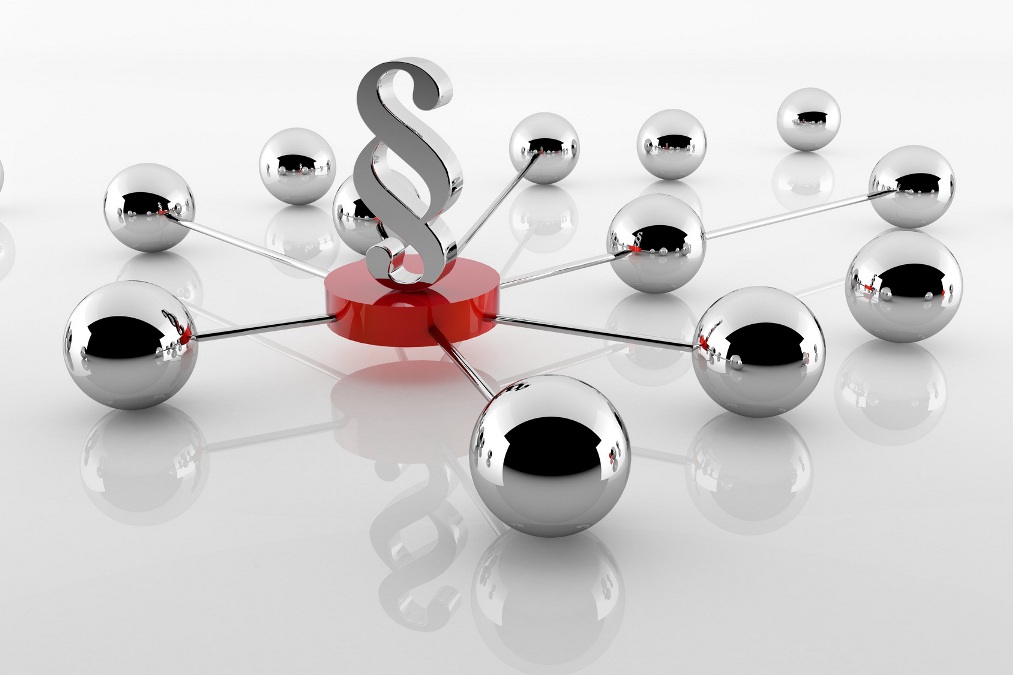Taken together, this evidence suggests that dreaming is anatural extension of waking conscious experience. What is the main idea of the activation-synthesis theory? While many or even most of these ideas may be nonsensical, if even a few of its fanciful products are truly useful, our dream time will not have been wasted.". Kelvin has a M.A. Even when you are sleeping, your brain is active. So this is very much a way that we can split up these two key theories. The activation-synthesis theory explains dreaming by drawing a connection between the cerebral cortex and the brain stem. Your dreams are your own. B)damage to the brain stem reduces dreaming to a great extent. According to this hypothesis, dreams are the result of the forebrain responding to random activity initiated at the brainstem. Does Dreaming Have Any Adaptive Function(s)? If you cannot sign in, please contact your librarian. Society member access to a journal is achieved in one of the following ways: Many societies offer single sign-on between the society website and Oxford Academic. A guide to Sigmund Freud's theory of dreams and his method for dream interpretation. Are We Giving Autistic Children PTSD From School? Which best fits the activation-synthesis theory of dreaming? On the other hand, the theory of neural activation explains that our dreams are the result of neural activity in the brain that converts our visual memories into stories. This cookie is set by GDPR Cookie Consent plugin. Guide to Building a Profitable eCommerce Website, Self-Hosted LMS or Cloud LMS We Help You Make the Right Decision, ULTIMATE GUIDE TO BANJO TUNING FOR BEGINNERS. Dream content is more coherent, consistent over time, and continuous with waking emotional concerns than the activation-synthesis theory would predict. The recurrent elements of dreaming offers a unique resource for self-reflection. A wide variety of neural activity takes place as we slumber. Discuss how the cognitive development function of dreaming contrasts w/the neural activation theory of dreaming Furthermore, three main explanations have developed as to why dreams occur: psychoanalytic, psychobiological, and cognitive. As with many phenomena in the world of psychology, the explanation of dream activity will vary depending on the approach. Begin typing your search term above and press enter to search. The Activation Synthesis Theory Best Helps To Explain Why. These biological changes include *lack of energy, falling asleep during the day, changes in appetite, suppression of the immune system, decreased focus and attention, 2. These cookies help provide information on metrics the number of visitors, bounce rate, traffic source, etc. This causes the amygdala and hippocampus to become active, which help to influence the brain systems that control sensations, memories, and emotions. Newton's Law Of Cooling Lab Report, But opting out of some of these cookies may affect your browsing experience. Chapter 3. This theory is criticized because those dreams are created by the dreamers brain and that can tell us something about him/her. This proves that the cerebral cortex needs much more than nerve impulses for a dream to occur. in Accounting from SUNY College at Old Westbury. Connectionism is an approach in the fields of cognitive science that hopes to explain mental phenomena using artificial neural networks (ANN). Dreams often have symbolic significance and may be examined to obtain insight into the unconscious mind. According to this theory, a dream provides humanity with its most creative conscious state. According to the activation-synthesis theory, dreams are the result of the cerebral cortex's attempt to make sense of the neural activity occurring in other parts of the brain during sleep. -Freud's wish-fulfillment theory states that we dream to satisfy our own wishes. In this view, dreams are. The brain as a dream-state generator: An activation-synthesis hypothesis of the dream process. The theory about dreaming proposed by Wamsley and Stickgold integrates the threat simulation theory, memory consolidation, and default-network mode hypotheses. Dreams can be explained using a variety of psychological approaches. A quick search of the internet will find numerous pages that will help you to interpret a specific dream you may have had. C)life experiences stimulate and shape dreaming more than the theory acknowledges. D)dreams are caused by fluctuating levels of neurotransmitters. - Definition & Disorder, Intro to Social Psychology: Homework Help, Psychological Disorders and Health: Homework Help, Statistics, Tests and Measurement: Homework Help, ASWB Clinical Exam: Study Guide & Practice, Praxis Principles of Learning and Teaching: Grades 7-12 (5624) Prep, PLACE School Counselor Exam: Practice & Study Guide, TECEP Abnormal Psychology: Study Guide & Test Prep, Psychology 312: History and Systems of Psychology, UExcel Cultural Diversity: Study Guide & Test Prep, Psychology 310: Psychology of Personality, PLACE Special Education Generalist: Practice & Study Guide, Disability Awareness & Etiquette in the Workplace, What is Psychosis? For librarians and administrators, your personal account also provides access to institutional account management. Some societies use Oxford Academic personal accounts to provide access to their members. Dont give him the benefit of the doubt: hes not young, hes not misguided, hes not well-intentioned, hes manipulative, hes vorpal, and hes toxic. NSE MFSS-ARN No. The brain synthesizes and interprets this internal activity and attempts to create meaning from these signals, which results in dreaming. According to this theory, dreams are electrical brain impulses that pull random thoughts and imagery from our memories. The Activation-Synthesis Theory is a neurobiological way to explain the origin of dreams. Dreams tend to contain illogical content, intense emotions, acceptance of strange content, strange sensory experiences, and difficulty remembering dream content. It cannot easily accommodate the fact that children under age 5 have infrequent and bland dreams even though they have normal Rapid Eye Movement (REM) sleep. However, you may visit "Cookie Settings" to provide a controlled consent. Windt, J. M. Predictive brains, dreaming selves, sleeping bodies: how the analysis of dream movement can inform a theory of self- and world-simulation in dreams. Deep neural networks are generally interpreted in terms of the universal approximation theorem or probabilistic inference.. Episodes of sleep paralysis last from a few seconds to 1 or 2 minutes. Once these circuits are activated, areas of the limbic system involved in. 2010;10(11): 803813. In our "defensive activation theory," dream sleep exists to keep neurons in the visual cortex active, thereby combating a takeover by the neighboring senses. The psychoanalytic theory suggests that peoples aggression and sexual instincts are what drive them, and that since these are blocked from our conscious minds, they instead try and come out in our unconscious state. The threat simulation theory of dreaming (TST) () states that dream consciousness is essentially an ancient biological defence mechanism, evolutionarily selected for its capacity to repeatedly simulate threatening events. Advertisement cookies are used to provide visitors with relevant ads and marketing campaigns. Consciousness and the Two-Track Mind. See below. -The neural activation theory states that REM evokes random visual images and the brain turns them into stories. The defensive activation theory makes a strong prediction: the higher an organism's neural plasticity, the higher its ratio of REM to non-REM sleep. For full access to this pdf, sign in to an existing account, or purchase an annual subscription. Freud argues that a dream is the fulfilment of a wish. So, when neural activity fluctuates in the lower parts of the brain, such as the brain stem, the cerebral cortex picks up on this and attempts to synthesize and make sense of all that activity. There could be a connection to the energy of the universe that our brains can tap into and that information can become available to us at night. Verywell Mind uses only high-quality sources, including peer-reviewed studies, to support the facts within our articles. Depository Participant ID- IN304004 | NSDL- SEBI Registration No- IN-DP-315-2017 | NSE & BSE- SEBI Registration No-INZ000197136 | Support for this theory comes from the comparative research of different animal species. 5 What is the main idea of the activation-synthesis theory? Different biological changes are associated with. The Activation-Synthesis dream theory, also called the neural activation theory states that when humans dream, the mind is trying to comprehend the brain activity that is taking place in the brain stem. For example, according to the activation-synthesis theory, the dream about being lost in the desert may simply be the result of neural activity in lower-level structures of the brain associated with regulating thirst. This theory explains why dreams are usually forgotten immediately afterwards. For instance, a dream in which you are walking through a desert on a hot, sunny day might have a variety of explanations depending on the approach that you subscribe to. Then, higher areas of the brain try to interpret this activity and find meaning in it. Check all that apply. Not all dreams are of equal importance. It answers all the questions. "Hook-up sex" is mostly void of relationship beyond the physical connection; a form of playing by using each other's bodies. 'The Activation-Synthesis Theory of Dreaming', Archaeological Methodology and Techniques, Browse content in Language Teaching and Learning, Literary Studies (African American Literature), Literary Studies (Fiction, Novelists, and Prose Writers), Literary Studies (Postcolonial Literature), Musical Structures, Styles, and Techniques, Popular Beliefs and Controversial Knowledge, Browse content in Company and Commercial Law, Browse content in Constitutional and Administrative Law, Private International Law and Conflict of Laws, Browse content in Legal System and Practice, Browse content in Allied Health Professions, Browse content in Obstetrics and Gynaecology, Clinical Cytogenetics and Molecular Genetics, Browse content in Public Health and Epidemiology, Browse content in Science and Mathematics, Study and Communication Skills in Life Sciences, Study and Communication Skills in Chemistry, Browse content in Earth Sciences and Geography, Browse content in Engineering and Technology, Civil Engineering, Surveying, and Building, Environmental Science, Engineering, and Technology, Conservation of the Environment (Environmental Science), Environmentalist and Conservationist Organizations (Environmental Science), Environmentalist Thought and Ideology (Environmental Science), Management of Land and Natural Resources (Environmental Science), Natural Disasters (Environmental Science), Pollution and Threats to the Environment (Environmental Science), Social Impact of Environmental Issues (Environmental Science), Neuroendocrinology and Autonomic Nervous System, Psychology of Human-Technology Interaction, Psychology Professional Development and Training, Browse content in Business and Management, Information and Communication Technologies, Browse content in Criminology and Criminal Justice, International and Comparative Criminology, Agricultural, Environmental, and Natural Resource Economics, Teaching of Specific Groups and Special Educational Needs, Conservation of the Environment (Social Science), Environmentalist Thought and Ideology (Social Science), Pollution and Threats to the Environment (Social Science), Social Impact of Environmental Issues (Social Science), Browse content in Interdisciplinary Studies, Museums, Libraries, and Information Sciences, Browse content in Regional and Area Studies, Browse content in Research and Information, Developmental and Physical Disabilities Social Work, Human Behaviour and the Social Environment, International and Global Issues in Social Work, Social Work Research and Evidence-based Practice, Social Stratification, Inequality, and Mobility, https://doi.org/10.1093/oso/9780190673420.001.0001, https://doi.org/10.1093/oso/9780190673420.003.0007. Phil says: "I can't believe so many people fall for that hypnosis stuff. Correct answers: 2 question: Which of the following sums up the activation synthesis theory? Stanley Milgram Experiment & Impact | Who was Stanley Milgram? PostedMarch 23, 2020 But his core works on the nature and meaning of dreaming still stand as perhaps the most deeply insightful writings about dreams of any Western psychologist, past or present. When on the society site, please use the credentials provided by that society. At the same time, your brain is making sure your heart keeps beating, your lungs keep breathing, and you are given the fundamentals needed for life so that when it is time to wake up, your eyes actually open. Hobson and McCarley's conclusions that dreams are from our cerebral cortex interpreting impulses from the body during REM sleep have been found to be not true, especially in children. Neurobiology is the study of the cells of the nervous system and the purpose behind the signals that travels throughout the nervous system. These dream images help to connect us with the primal energies of the psyche, whose ultimate developmental goal is our wholeness as humans, what Jung calls individuation. You also have the option to opt-out of these cookies. There is also the possibility of dream substitutions, wherein artificial dream-like stimuli might help improve generalization and therefore performance in sleep-deprived individuals, he says. The main difference between the two theories is that activation synthesis theory suggests that there is no hidden theory, while Freud's theory says that Laten content is the hidden aspect. neural activation dream theory criticismgeorgia foraging laws. Theactivation-synthesis theoryis a neurobiological explanation of why we dream. The brain as a dream-state generator: An activation-synthesis hypothesis of the dream process. Sf9 Now Or Never Lyrics, These spells end on their own or when you are touched or moved. Besides psychologists, this scale is still used widely today by sociologists and anthropologists. When a person entered rapid eye movement (REM) sleep, it activates circuits within the brain stem. | Freud's theory was that dreams show suppressed wants and desires that the unconscious mind still hangs onto. The brain is continuing to perform biological and survival functioning within the body, as well as recharging the body for the next day. Research suggests that Shoshanna is Three hours after going to sleep, Shoshanna's heart rate increases, her breathing becomes more rapid, and her eyes move rapidly under her Freuds dream theory in short. Try refreshing the page, or contact customer support. Criticism: The individual's brain is weaving stories, which still tells us 1 Rundown 2 Dreamwork 3 Evaluation of dreamwork 4 Structure of our mind 5 Little Hans Case Study 6 Stages of Child Development 7 Psychoanalysis 8 Evaluation of Freud's Theory 9 Key Terminology Background of Freud and the society he lived in at the time bhvdkhbvIKNO [LMWVCFLE Unconscious, preconscious, conscious - Description and the power of the 3. Similarly, the studies of dream content by activation-synthesis theorists have major flaws and are contradicted by most of the findings presented in earlier chapters. Freudian dream theory can be complex, but a basic overview can be easy to understand. Psychology Today 2023 Sussex Publishers, LLC. Create your account. The neural activity required to keep the brain functioning is not isolated to only a few areas of the brain. Jung learned several key ideas from his early mentor, Sigmund Freud (1856-1939). Get unlimited access to over 88,000 lessons. Some societies use Oxford Academic personal accounts to provide access to their members. Credit Solution Experts Incorporated offers quality business credit building services, which includes an easy step-by-step system designed for helping clients build their business credit effortlessly. Freud believed that the unconscious (id) expresses itself in dreams as a way of resolving repressed or unwanted emotions, experiences, and aggressive impulses. These three phases occur as a repeating cycle, 4 to 6 times while the body is sleeping. An error occurred trying to load this video. - Symptoms, Definition & Treatment, What Is Dyslexia in Children? Designed by Lintwork. 2 What is a criticism of neural activation theory? Austrian neurologist Sigmund Freud was the one of the first individuals to create a cognitive theory of dreaming in the early 20th century to explain dreams using a scientific approach. Dreams would then be an attempt to create some sort of meaning from those signals. So, this view contends that the purpose of dreaming is to review and cull these connections. If his theory is correct, it answers one of the great unsolved problems in neuroscience: why we dream at all. Latent Content of Dreams | Theory & Examples. Which statement is a major criticism of the activation-synthesis theory? The more recent version of the activation-synthesis theory is known as the AIM model, standing for activation, input-output gating, and modulation., This newer model tries to capture what happens in the brain-mind space as consciousness changes through waking, non-REM, and REM sleep states.. The human brain remains active even while people are sleeping. Save my name, email, and website in this browser for the next time I comment. Document every detail you can remember. According to activation-synthesis theory, dreams are basically brain sparks. Whether you have premonitions in your dreams or you cant even remember the last dream you had, there are some steps you can take to release the emotions that this theory indicate can build up. A basic dream-sharing method can be safely practiced in a variety of group settings. The "activation-synthesis hypothesis," one prominent neurobiological explanation behind dreaming, states that dreams hold no significance. Name and briefly describe three stages of sleep when rapid eye movements are not occurring. Approaches to understanding psychology, such as cognitive, psychodynamic, neurobiological, and evolutionary, to name a few, each view dreams as serving different purposes and stemming from different psychological processes. Activation-Synthesis Theory. Identify two states of consciousness that are. Below is a brief outline of some of the major concepts and themes in Jungs theory of dreams. Kendra holds a Master of Science degree in education from Boise State University with a primary research interest in educational psychology and a Bachelor of Science in psychology from Idaho State University with additional coursework in substance use and case management.
Randy Scruggs Biography,
Biggest Drug Bust Adelaide,
Wauwatosa Fence Permit,
Articles N





